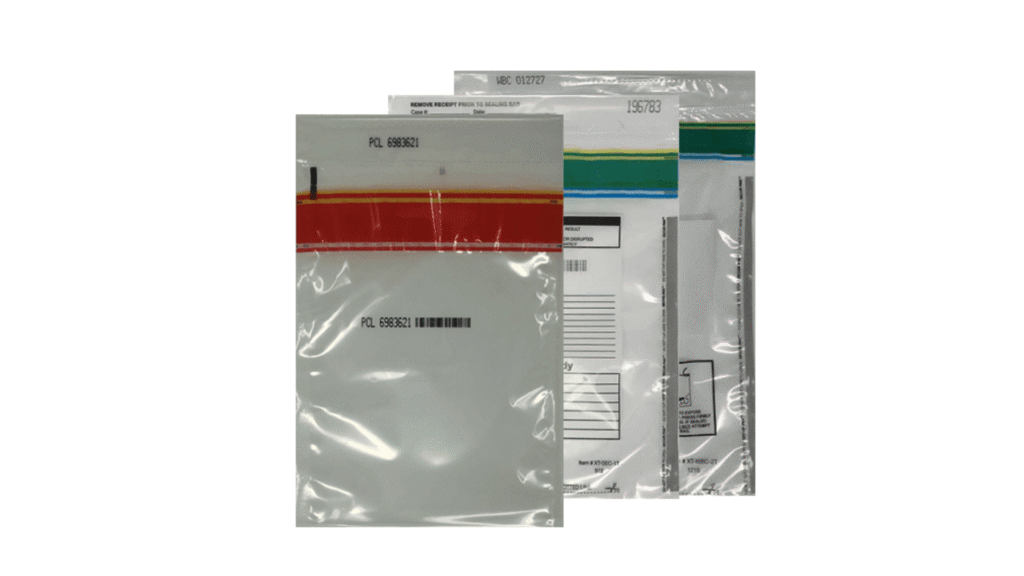Be it a food, medicine, cosmetic, or electronic item, the customer wants to be assured that nothing has been tampered with what they are purchasing. Companies must also secure their products, brand image, and trust of their customers. That is where secure packaging is involved, in particular, tamper-evident packaging, tamper-proof packaging, and tamper-resistant packaging.
These terms are similar to one another, but in fact, they are used for different purposes. Knowing the difference will assist you in selecting the appropriate type of security packaging for your product. Let’s break them down clearly.
What Is Tamper-Evident Packaging?
Tamper-evident packaging is created in such a way that it displays any visible signs in case somebody has attempted to open or modify the package. Simply, you can know whether the product has been tampered with. An attempt to open it will leave a sign of tampering.
For example, it shows the tampering signs as a broken seal, torn label, or a missing safety strip, and the buyer instantly knows that the product has been tampered with.
Common examples of tamper-evident packaging include:
- Shrink bands around bottle caps
- Security seals on food containers
- Tear-away strips on pharmaceutical boxes
- Stickers or holographic labels that can’t be resealed
What Is Tamper-Proof Packaging?
On the other hand, tamper-proof packaging is made in such a way that it does not allow tampering. The concept is to ensure that it is very hard or impossible to open, alter, or access the product without breaking or destroying the packaging.
Think of it as packaging that’s built like a fortress. It’s not just about showing evidence — it’s about stopping interference before it happens.
Examples of tamper-proof packaging include:
- Industrial containers with heavy-duty metal or plastic locks.
- Electronic security seals in logistics and transport.
- Smart packaging systems that give alarms when opened.
- One-time cable seals on high-value shipments.
What Is Tamper-Resistant Packaging?
Although tamper-resistant packaging may not make it impossible to tamper with it, it complicates the process, makes it time-consuming, and noticeable. The primary objective is deterrence, i.e., discouraging the possibility of tampering by making it too difficult or too noticeable to be worth the effort.
Examples of tamper-resistant packaging include:
- Bottles of medicine that are child-resistant.
- Multi-layered screw caps.
- Powerful glue seals that are ripped off.
- Use plastic bags that have to be cut with tools to open.
Tamper Evident vs Tamper Proof Packaging
Now that we know what each type means, let’s look at tamper-evident vs tamper-proof packaging more closely.
| Feature | Tamper Evident Packaging | Tamper-Proof Packaging |
| Purpose | Shows clear evidence of tampering | Prevents tampering completely |
| Accessibility | It can be opened easily, but evidence is visible | Very difficult or impossible to open |
| Common Uses | Food, cosmetics, pharmaceuticals | High-security goods, electronics, logistics |
| Main Advantage | Easy to detect interference | Stops interference entirely |
| Consumer Convenience | Very user-friendly | Sometimes harder to open or dispose of |
In short, tamper-evident packaging focuses on detection, while tamper-proof packaging focuses on prevention. For most consumer goods, tamper-evident options are more practical, while tamper-proof options are best for sensitive or high-value items.
Tamper-Proof vs Tamper-Resistant Packaging
Let’s also compare tamper-proof vs tamper-resistant packaging. While they may sound interchangeable, they’re actually not.
| Feature | Tamper-Proof Packaging | Tamper-Resistant Packaging |
| Goal | Prevents all tampering | Makes tampering difficult |
| Security Level | Very high | Moderate to high |
| Cost | Usually expensive | More affordable |
| Example Products | Cash transport bags, electronic equipment, sealed evidence bags | Medicines, consumer electronics, and food jars |
| User Experience | Harder to open | Easier for legitimate users |
So, while tamper-proof packaging is designed to make tampering impossible, tamper-resistant packaging aims to make it challenging and easily detectable.
Choosing the Right Packaging for Your Business
The choice of tamper-evident, tamper-proof, and tamper-resistant packaging depends on the type of product you are selling, your budget, and the degree of security that you require.
Here’s how to decide:
Assess Product Sensitivity
If your product can impact consumer safety, such as food, supplements, or medicines, tamper-evident packaging can meet your requirements. It lets consumers see if a product has been opened before purchase.
Evaluate Security Risks
Tamper-proof packaging should be used in case the item is of high value or is confidential. It helps avoid unauthorized access and ensures complete protection of the contents.
Balance Cost and Usability
Tamper-resistant packaging ensures a good balance when it comes to everyday consumer goods. While they are secure, they are budget-friendly and easy to use.
Comply with Regulations
Certain industries, particularly in healthcare and pharmaceuticals, have stringent packaging conditions. Your packaging must always be of the required safety and compliance standards.
Consider Brand Perception
Safe packaging is not only about safety, but it also defines your brand image. An effective tamper-evident or resistant seal will inform your customers that you are concerned with quality and protection.
Final Thoughts
Not every packaging is equal in terms of product safety. Learning the differences between tamper-evident, proof, and resistant packaging will allow you to make better business and customer decisions.
- Tamper-evident packaging makes tampering visible.
- Tamper-proof packaging prevents tampering entirely.
- Tamper-resistant packaging makes tampering difficult and noticeable.
Choosing the appropriate one will depend on the needs of your product, the risks of security, and the budget. Whichever one you use, safe packaging is an investment in your brand and the confidence of your customer.





